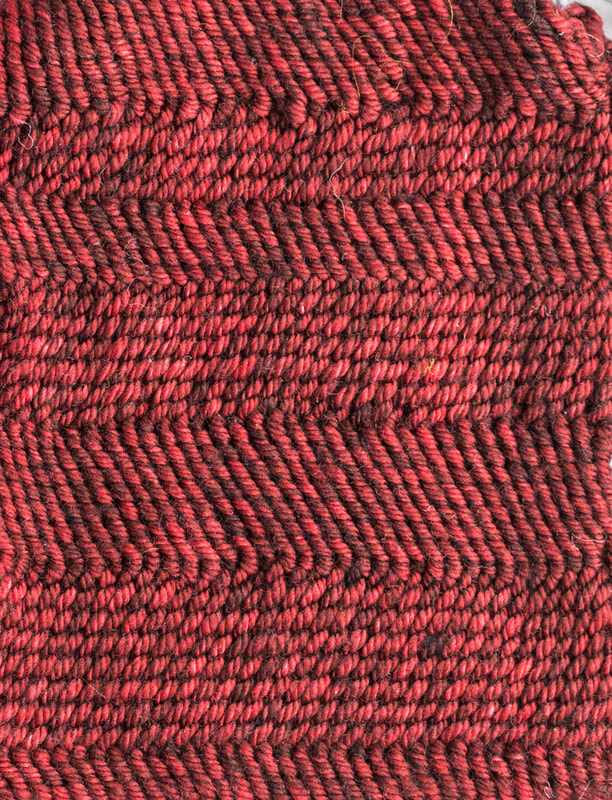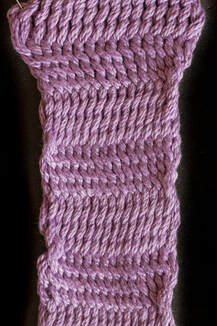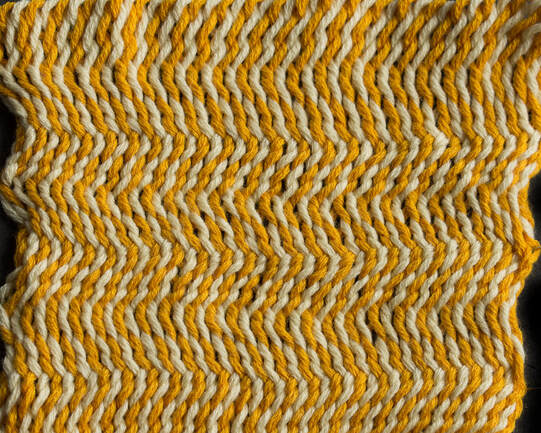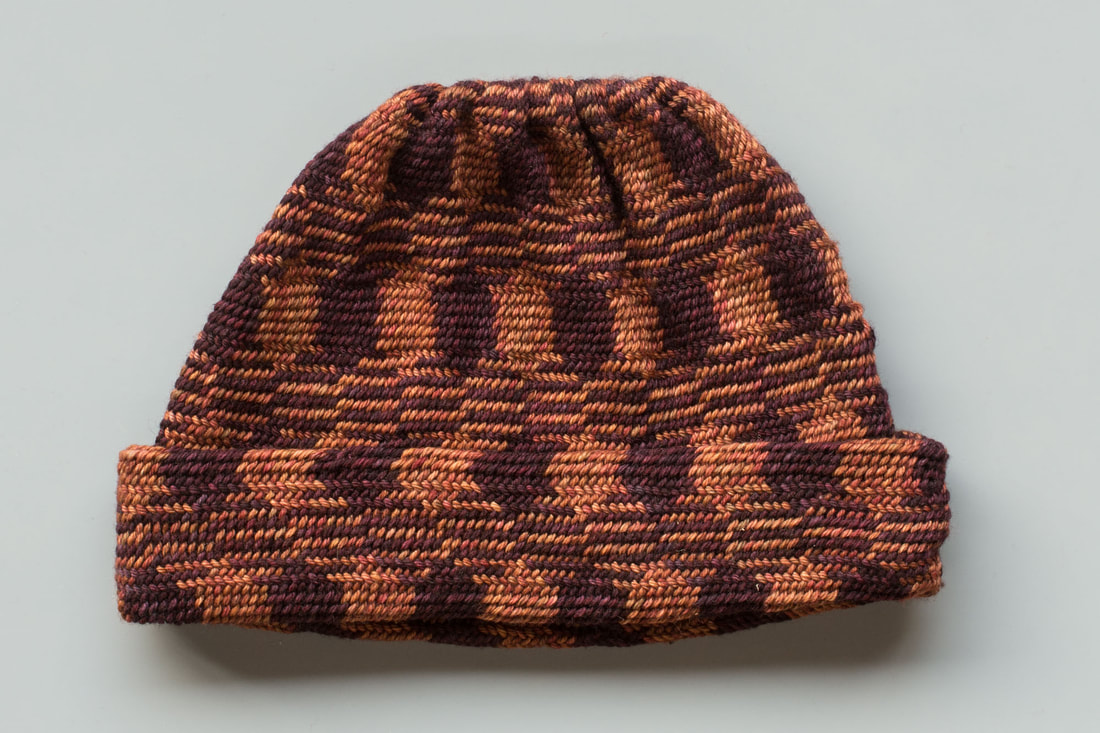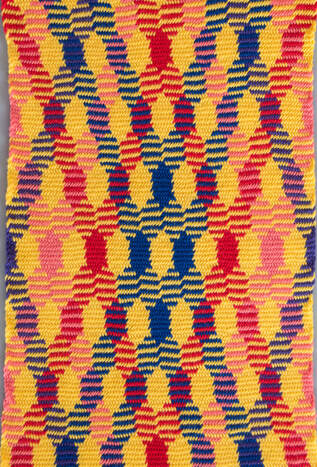January 2023 s&Z
|
Rows of S&Z
We start with a pair of patterns with alternating rows of S and Z-leaning stitches. When switching from S to Z or from Z to S we create a row of interlacing, where threads cross rather than interlink. In Motif A, four rows of S stitches are followed by four rows of Z. In Motif B, four rows of Z are followed by four rows of interlacing. This interrupted twill moves the threads sideways and can create diagonal patterns when alternating colours are used. Invitation 1: Make a wider cloth by increasing the number of loops in either motif. These patterns work with any even number of threads. Invitation 2: Experiment with the number of rows of S and Z in Motif A. The pattern works with any EVEN number of rows. The edge stitches become more complicated when there are odd numbers of rows. The red sample shown has variable numbers of rows of S and Z. Invitation 3: Play with color—use loops of alternating color for Motif A, as in the yellow and white sample. Alternating blocks of 4 or 8 loops of color for Motif B. See Sharon’s blog for details on the color schemes used in the yellow scarf and brown hat. For instructions on working with S-lean and Z-lean in the stitches, and how to switch from one to the other, scroll down to the bottom of the page. |
|
Motif A
|
Motif B
|
|
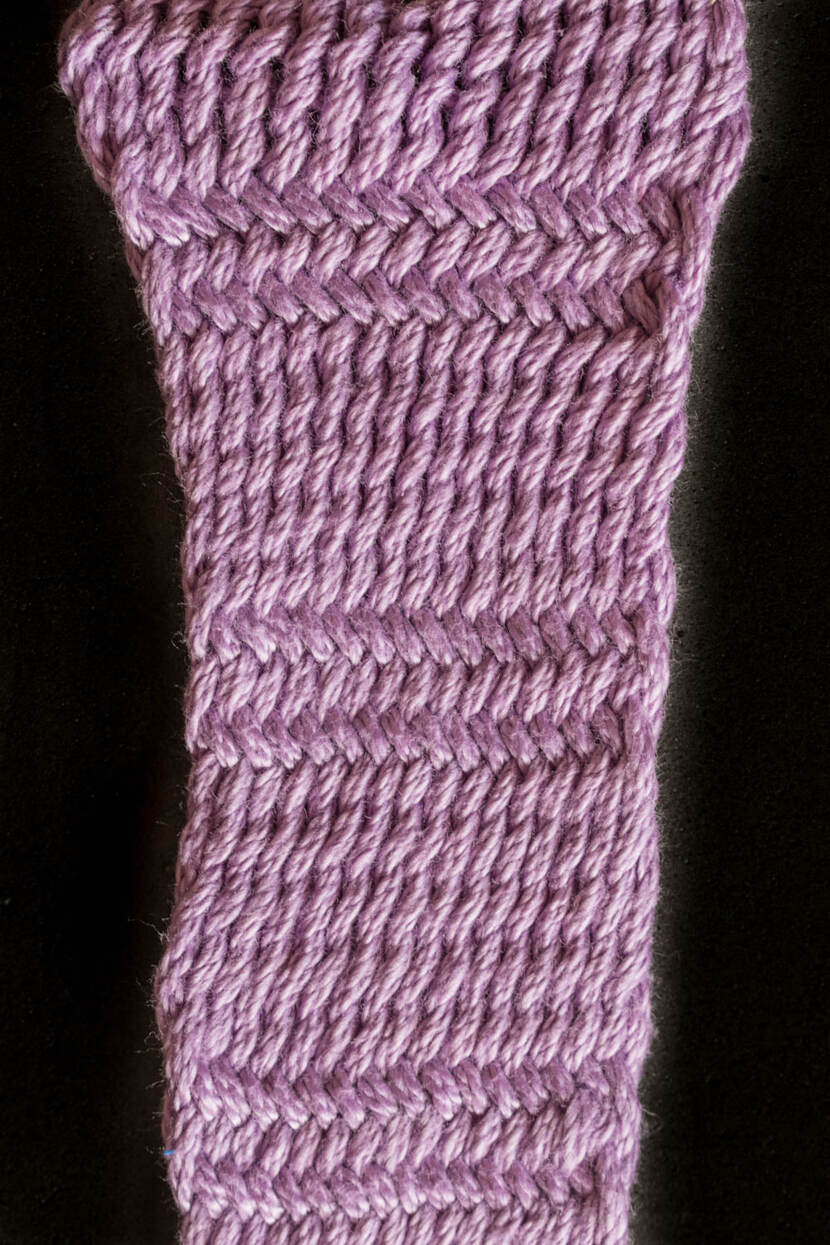
|
| |||||
|
At the right you will find a short video and instruction sheets, explaining the basic difference between Z-leaning stitches and S-leaning stitches.
|
|
|
The video at the right shows you how to work full rows of Z, and then switch to full rows of S, and then back again to Z.
The first instruction sheets below shows you how to transition from Z to S. The second instruction sheet shows returning from rows of S back to Z.
|
| ||||
***Although Carol mostly advocates for the use of a bead on each edge thread .... when you are working full rows of Z, and then full rows of S ... which is the case this month ... then the edge thread will necessarily wander "inland". The bead thread will not remain at the edges. Carol councils that you DO NOT use a bead for these motifs.***
|
Alternating between Z and S (one row of Z, and then one row of S, working overplait rows) results in a structure that looks like an over-2, under-2 twill. It may also be called 2-2 interlacing. Find an instruction sheet at the right.
|
| ||
A tip from Bridget P. that may be helpful when using the colour-coded charts:
Fuchsia means use Front threads
Baby pink means use Back threads
Fuchsia means use Front threads
Baby pink means use Back threads
